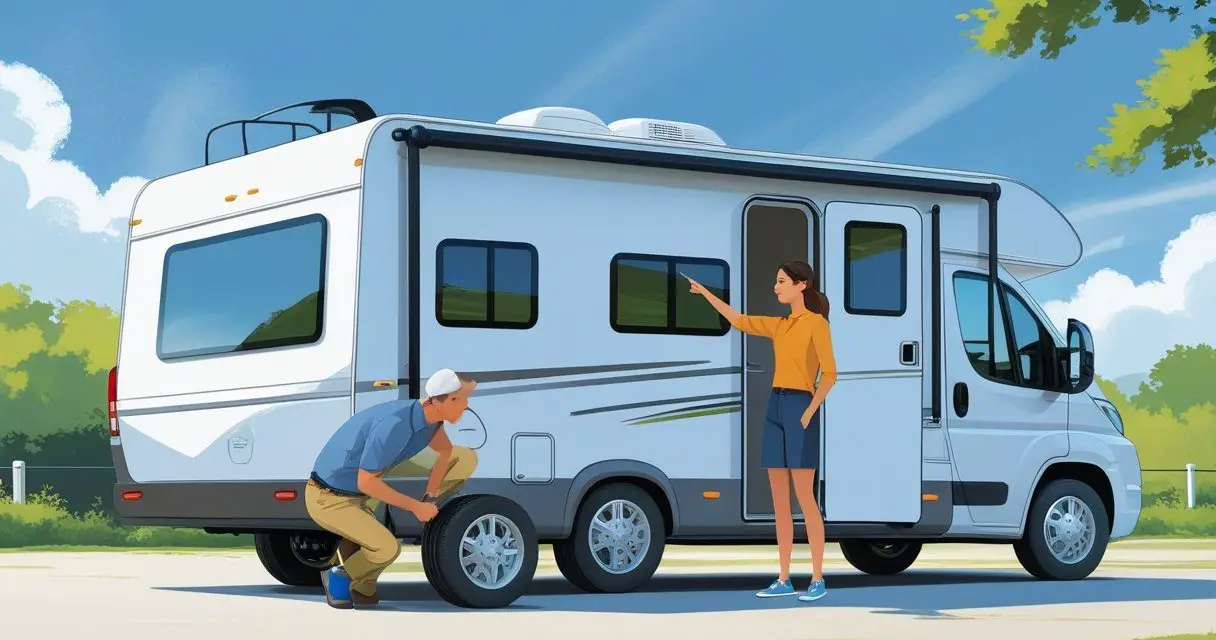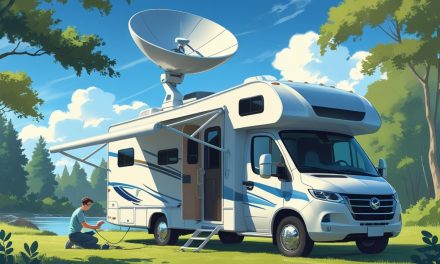Would you like to save this article?
When you’re dreaming of hitting the open road in your shiny new RV, you probably imagine perfect weekends at scenic campgrounds, not dealing with leaky roofs and faulty electrical systems. Unfortunately, the reality of RV ownership can be quite different from the glossy brochures.
Meet Pierre and Laurel from Blue Ox on the Run, two RV inspectors who have become the industry’s most feared truth-tellers.
You’ll discover why some RV dealers actually ban them from their lots and what shocking defects they’re finding in brand-new units. These aren’t just minor cosmetic issues – we’re talking about problems that could cost you thousands of dollars or even put your safety at risk. If you’re considering buying an RV, you need to know what you’re really getting into before you sign on the dotted line.
1. New RVs Are Plagued with Manufacturing Defects
You might think that spending $60,000 to $540,000 on a new RV guarantees quality, but you’d be wrong. According to Pierre and Laurel’s inspection data, 90% of their inspections are on brand-new RVs, and they consistently find significant problems that manufacturers somehow missed. In one shocking example, they discovered 61 separate defects in a one-year-old Class A motorhome that was supposedly “factory perfect.”
Here’s what the numbers really tell you: According to the National Indoor RV Centers (NIRVC) Defects Per Unit report, every single RV manufacturer has measurable defect rates in their new units. The RV industry as a whole has more recalls than the automobile industry, with manufacturing errors attributed to insufficient oversight, inattention, and production haste.
You’re essentially paying premium prices for products that would be considered unacceptable in any other industry. While car manufacturers use computer-controlled assembly lines with strict quality standards, RV manufacturing still relies heavily on manual labor with inconsistent quality control measures.
2. RV Inspections Can Save You Thousands of Dollars
Think an RV inspection is just an expensive add-on? Think again. Pierre and Laurel spend between 6-11 hours physically inspecting each RV, taking up to 800 photographs and creating detailed repair lists that customers can use to negotiate with dealers. Their clients regularly save the entire cost of the inspection through price negotiations alone.
| Inspection Benefits | Real-World Value |
|---|---|
| Detailed Photo Documentation | 600-800 photos per inspection |
| Video Evidence | 20-30 videos of defects |
| Repair Cost Estimates | Itemized list of all issues |
| Negotiation Power | Often saves inspection cost entirely |
| Peace of Mind | Know exactly what you’re buying |
You’ll have concrete evidence to present to dealers, not just vague complaints about “something doesn’t feel right.” Many customers use the inspection reports to get thousands of dollars knocked off the purchase price or to demand repairs before taking delivery.
Here’s the reality check you need: Would you buy a $300,000 house without a home inspection? Your RV is likely one of the largest purchases you’ll ever make, yet most people spend more time researching a $500 smartphone than they do investigating their RV’s actual condition.
3. Dealers Often Ban Professional Inspectors
You might be shocked to learn that many RV dealerships actively prevent professional inspectors from examining their inventory. Pierre from Blue Ox on the Run admits that dealerships frequently ban them from their lots, and he actually loves it because it creates more demand for their services.
When a dealer refuses to allow an inspection, you should immediately ask yourself why. Reputable businesses welcome scrutiny because they have nothing to hide. The fact that some dealers go to great lengths to prevent professional inspections should tell you everything you need to know about the quality of their products.
The industry’s response has been telling: Instead of improving quality control, many dealers simply try to eliminate the messenger. RV dealers have been quoted calling the quality of new RVs “pathetic” and “horrendous” RV Travel. Yet these same dealers often resist allowing independent inspections that would document these problems.
You deserve better than being kept in the dark about a major purchase. If a dealer won’t allow an inspection, you should strongly consider taking your business elsewhere.
4. The “Certification” System Doesn’t Guarantee Expertise
Not all RV inspectors are created equal, and you need to understand the difference. Pierre explains that becoming “certified” doesn’t mean you’re “qualified.” He attended the National RV Inspectors Association (NRVIA) school but quickly realized that certification was just the starting point, not the finish line.
You’ll find inspectors who were “bank tellers for 40 years” suddenly calling themselves RV experts after just 2-3 weeks of training. Meanwhile, Pierre and Laurel have modified their inspection software and created systematic checklists that ensure they touch and test every square inch of an RV.
The scary truth: Some certified inspectors think Pierre is “too slow” because he spends so much time on each inspection. These same inspectors might complete what they call a “thorough” inspection in just a few hours, while Blue Ox spends 15-18 man-hours per RV.
You need to ask potential inspectors tough questions:
- How many hours do they spend per inspection?
- Do they photograph everything they find?
- Can they provide references from recent clients?
- Do they understand how RVs are actually manufactured?
5. Your Eyes and Nose Are Your First Line of Defense
Even if you can’t afford a professional inspection, you’re not completely helpless. Laurel’s simple advice could save you thousands: “You’ve got eyes and you’ve got a nose.” Look for stains, wrinkles, or anything that seems off, and trust your sense of smell.
Here’s your DIY inspection checklist:
| What to Look For | Red Flags |
|---|---|
| Visual Inspection | Stains, wrinkles, uneven surfaces |
| Smell Test | Musty odors (water damage), heavy perfumes (covering problems) |
| Floor Test | Soft spots, lifting tiles, squeaky areas |
| Moisture Check | Use a moisture meter on walls and floors |
If you smell “pretty perfume” throughout the RV, they’re likely hiding something underneath. If you detect musty, basement-like odors, there’s probably water damage somewhere. Trust your instincts – if something doesn’t feel right, investigate further.
You should also take advantage of the wealth of free information available. Blue Ox on the Run has created a library of over 300-400 inspection videos on YouTube that show exactly what to look for in different RV brands and models.
The RV industry needs a wake-up call, and informed consumers like you are the ones who can deliver it. By demanding transparency, insisting on professional inspections, and voting with your wallet, you can force manufacturers and dealers to prioritize quality over quantity. Don’t let yourself become another victim of poor quality control – your dream RV adventure depends on making smart, informed decisions from the very beginning.
Meta Description: Discover 5 shocking truths about RV quality that dealers don’t want you to know. Learn why professional RV inspectors are banned from dealerships and how to protect yourself from expensive manufacturing defects in new RVs.
SOURCES
- RV Wingman YouTube Channel – Blue Ox on the Run Interview
- National Indoor RV Centers – Defects Per Unit Report
- RV Travel – Survey Ranks New RVs by Number of Defects
- RV Lifestyle – Industry Exposed for RV Quality Problems
- RV Travel – “Pathetic Quality”: RV Dealers Fed Up with Manufacturers
- Blue Ox on the Run RV Inspections
- Blue Ox on the Run YouTube Channel





